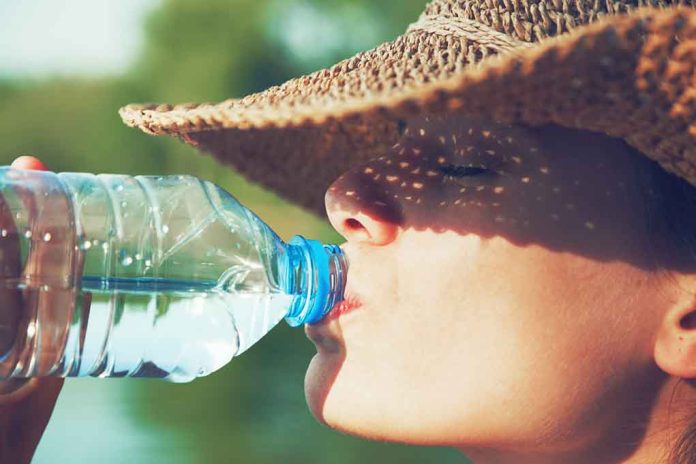(HealthyExaminer.com) – Bottled water can be a safe and convenient method to help you stay hydrated. In fact, 9 out of 10 Americans report a positive perception of bottled water, and 15.3 billion gallons of bottled water were sold in the United States in 2021. Bottled water sales have increased rapidly since 1998 when bottled water usage surged in popularity.
But do you know what’s in the bottled water you’re drinking?
The Food and Drug Administration (FDA) monitors the source of bottled water, the allowed degree of chemical or microbial contaminants, and the production conditions to make sure water distributed for consumption is safe and sanitary. The FDA classifies bottled water into five different categories: artesian well water, mineral water, spring water, well water, and purified water. It’s important to understand the difference between each type of bottled water.
Artesian Well Water
Artesian well water is collected from a well that taps into an aquifer, or layers of rock, sand, and earth that contain water. The pressure in the aquifer when tapped is referred to as artesian pressure. It can push the water to the surface to be extracted for drinking. The word artesian originates from the old Roman city of Artesium where artesian wells were drilled during the middle ages.
Mineral Water
Mineral water is defined as water that originates in an underground source and contains 250 parts per million of dissolved solids, or minerals. These minerals must come from the original water source and cannot be added later. Minerals may include calcium, magnesium, sodium, or other minerals depending on where they are sourced.
Spring Water
A spring can be defined as an underground water source that naturally flows to the surface. Water may be collected at the source or through a borehole. If pressure is used to extract the water, the chemical composition and quality must match what naturally flows to the surface to qualify as spring water.
Well Water
Well water comes from water that is tapped into and extracted from an underground aquifer. Unlike artesian well water, no pressure is applied to bring the water to the surface. There are many factors related to the construction of the well that impacts the safety of the water. The Center for Disease Control (CDC) has identified potential contaminants to wells based on proximity, which include but are not limited to the following:
- Septic tanks
- Livestock yards
- Petroleum tanks
- Fertilizer storage
- Manure stacks
These contaminants can cause illness and disease. You can learn more about proper well construction for safety on the Environmental Protection Agency’s website.
Purified Water
Purified bottled water is tap water from municipal sources that’s been treated before being bottled. Treatment options include the distillation of the water to remove minerals, reverse osmosis to remove mineral components, absolute 1-micron filtration to remove tiny particles and pathogens, and ozonation that disinfects water with ozone gas rather than chlorine. Other treatment processes may also qualify tap water to be classified and sold as purified water.
A Warning about Bottled Water Usage
Bottled water may be convenient, but researchers recommend some safety considerations. Water that’s left in warm conditions over a period of time could compromise your safety. When plastic bottles of water are heated, they release the chemicals antimony and bisphenol A (BPA). These chemicals have been linked to adverse health reactions in children and adults, up to and including cancer. Regularly drinking bottled water that has been subjected to heated conditions could create a health concern according to researchers.
Storing bottled water in cool, temperature-controlled locations could alleviate this safety concern. Avoid leaving bottled water in vehicles where the temperature and sun exposure could heat the plastic and contribute to a potential health risk.
Experts at Harvard University offer an additional warning for bottled water use, citing its contribution to rising global warming levels. Global warming contributes to pollution and creates yet another health concern for consumers. While water labels might lead you to believe you’re drinking safer water, studies have found that bottled water is no more pure, safe, or healthy than tap water.
Reusable BPA-free water bottles offer an alternative to plastic water bottle usage. This could be a healthier choice if you have concerns about environmental pollution and the associated health risks. It could also reduce your exposure to the chemicals contained in the plastic used by water companies.
Whether you purchase plastic water bottles to take on the go or fill up your reusable bottle at the tap, you can stay hydrated while knowing exactly what’s in your bottle.
Copyright 2023, HealthyExaminer.com














